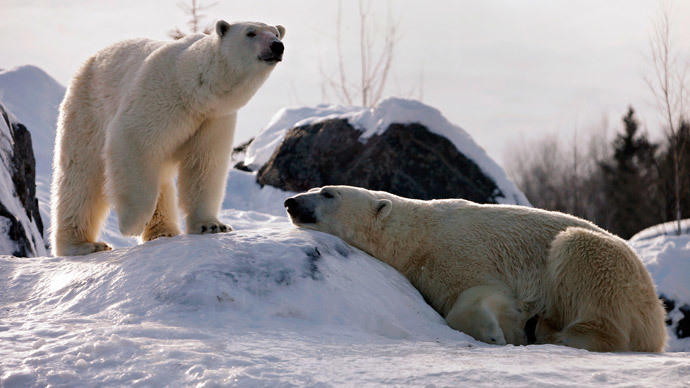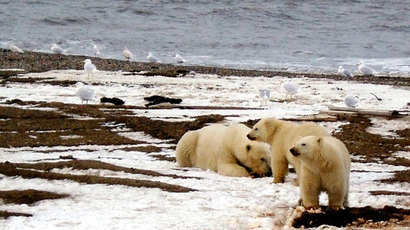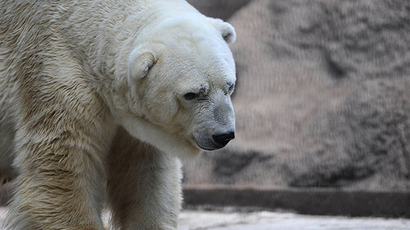Barely surviving: Alaska's polar bear population falls 40% in 10 years

Polar bears are becoming an endangered species in Alaska, where their numbers have fallen by 40 percent in a decade, says a new study. Poor ice conditions linked to global warming, limiting access to their traditional prey, may be to blame.
The number of polar bears in the southern Beaufort Sea near Alaska dropped to 900 in the period from 2001 to 2010, says the study, led by scientists from the US Geological Survey, as well as researchers from Canada and others from the US. The research appeared in the journal Ecological Applications, published by the Ecological Society of America (ESA).
The most drastic decline in the bear population was between 2004 and 2006 which led to 25-50 percent decline in abundance, says the research.
“Of the 80 cubs observed in Alaska from 2004 to 2007, only two are known to have survived,” said Jeff Bromaghin, USGS research statistician and lead author of the study.
Southern Beaufort Sea Polar Bear Population Declined in the 2000s http://t.co/6Rg1pUV0rhpic.twitter.com/WiOCOgUQDl
— USGS Wildlife Health (@USGSWILDLIFE) November 20, 2014
The scientists suggest that low survival during this period might have resulted from “unfavorable ice conditions that limited access to prey [seal] during multiple seasons; and possibly low prey abundance.”
They added that “continued climate warming and the ensuing loss of sea ice habitat” also may lead to the polar bears becoming extinct.
READ MORE:35,000 walruses forced onto land in Alaska due to decrease in Arctic Sea ice
For reasons which are not yet clear to the researchers, the survival of adult bears and cubs began to improve in 2007 “and abundance [of polar bears] was comparatively stable from 2008 to 2010 with approximately 900 bears in 2010," the study’s final year.
“The low survival may have been caused by a combination of factors that could be difficult to unravel,” said Bromaghin, “and why survival improved at the end of the study is unknown. Research and monitoring to better understand the factors influencing this population continue.”
Study: Polar Bear Populations Have Plummeted 40 Percent in Alaska and Canada http://t.co/wj4DbHOeZD via @TakePart
— World Wildlife Fund (@World_Wildlife) November 18, 2014
However, the paper states that survival of “subadult bears declined throughout the entire period.” The scientists suggest that conditions remained unfavorable for young bears newly separated from their mothers.
The authors of the study say that to more accurately predict what will happen to the bears, they need to understand “the ecological mechanisms underlying their population dynamics.”
According Dr. Pete Ewins, WWF’s (World Wide Fund for Nature) Species Conservation Specialist in Canada, the fall in the polar bear population “is a clear warning sign of the impact a warming Arctic has on ice-dependent species like the polar bear.”
READ MORE:Wildlife populations decline by over 50% since 1970 – WWF
“We know human activities have caused global wildlife populations to drop by over half in the last 40 years. We need to change course if we want to stop further habitat loss and ensure resilient wildlife populations, both in the Arctic and around the world,” said Margaret Williams, Managing Director for WWF’s Arctic program in Alaska.

The Polar Bear Specialists’ Group of the International Union for the Conservation of Nature will use the new data to track the trends in 19 populations of polar bears worldwide. Four geographical groups, including the one in the Beaufort Sea, are considered to be declining by the scientists, five are stable and one is increasing. As for the others, the data is insufficient to make a clear assessment.
The US Endangered Species Act put the polar bear, which mostly populate the Arctic Circle, on the endangered species list in 2008.














